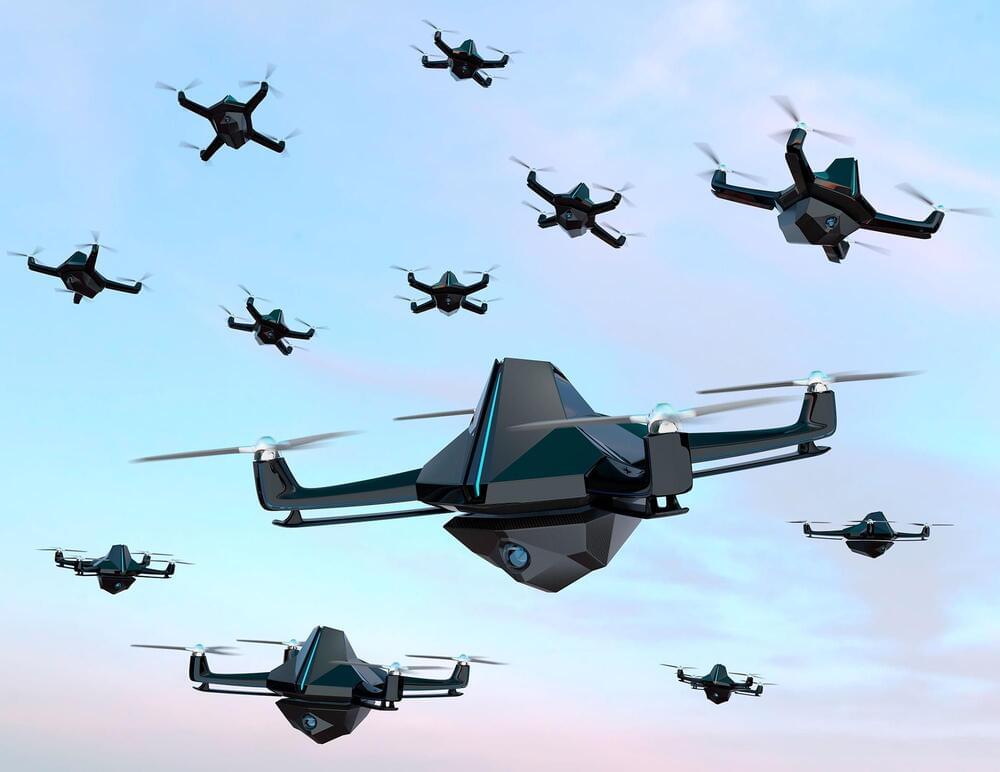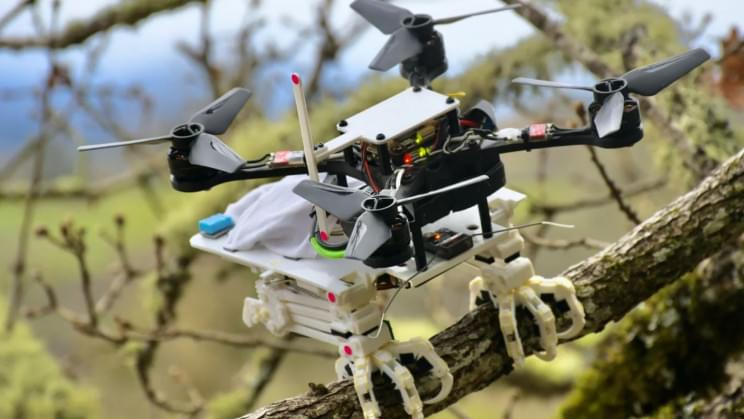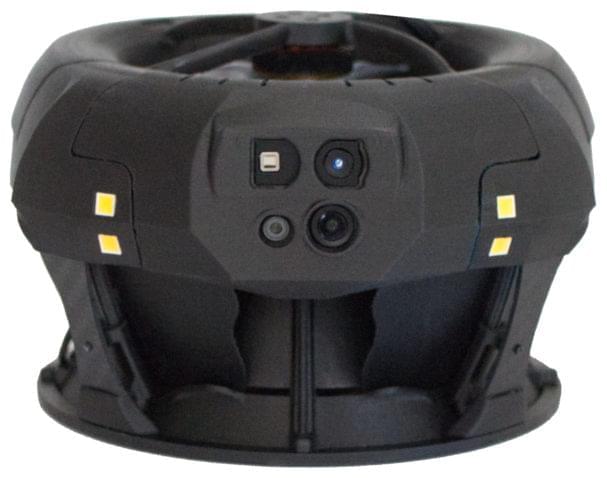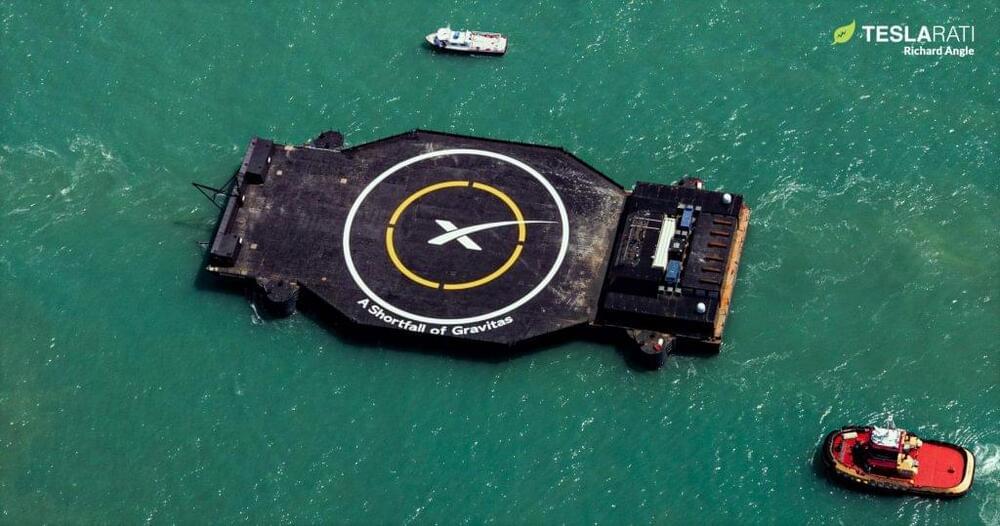The disclosure is the strongest indication yet that the service is banking on autonomous weapon systems to give it an edge in the increasingly fierce military competition with China.


The disclosure is the strongest indication yet that the service is banking on autonomous weapon systems to give it an edge in the increasingly fierce military competition with China.

Electric Sky says it’s begun building its first transmitter for providing tightly focused wireless power to drones in flight, thanks to funding from DARPA.
A startup called Electric Sky says it’s begun building its first Whisper Beam transmitter for providing tightly focused wireless power to drones in flight, thanks to a $225,000 award from the Defense Advanced Research Projects Agency.
Electric Sky will use the six-month Phase I award, granted through DARPA’s Small Business Innovation Research program, to explore ways to adapt its wireless architecture to power a swarm of drones.
The first phase of the project calls for building and testing a lab-bench demonstration system that would operate at short distances. Those experiments are expected to supply data that can be used to upgrade the system for higher power and longer distances.

Americans have become accustomed to images of Hellfire missiles raining down from Predator and Reaper drones to hit terrorist targets in Pakistan or Yemen. But that was yesterday’s drone war.
A revolution in unmanned aerial vehicles is unfolding, and the U.S. has lost its monopoly on the technology.
Some experts believe the spread of the semi-autonomous weapons will change ground warfare as profoundly as the machine gun did.

A series of deck-handling trials aboard a supercarrier is part of the buildup toward planned operational capability in 2025.

Prof Stuart Russell, founder of the Center for Human-Compatible Artificial Intelligence, at the University of California, Berkeley, is giving this year’s Reith Lectures.
He said: Because I think it’s really important and really urgent.
And the reason it’s urgent is because the weapons that we have been talking about for the last six years or seven years are now starting to be manufactured and sold.
So in 2017, for example, we produced a movie called Slaughterbots about a small quadcopter about 3in [8cm] in diameter that carries an explosive charge and can kill people by getting close enough to them to blow up.
We showed this first at diplomatic meetings in Geneva and I remember the Russian ambassador basically sneering and sniffing and saying: “Well, you know, this is just science fiction, we don’t have to worry about these things for 25 or 30 years.”
I explained what my robotics colleagues had said, which is that no, they could put a weapon like this together in a few months with a few graduate students.
And in the following month, so three weeks later, the Turkish manufacturer STM [Savunma Teknolojileri Mühendislik ve Ticaret AŞ] actually announced the Kargu drone, which is basically a slightly larger version of the Slaughterbot.
Full Story:

A new video released by nonprofit The Future of Life Institute (FLI) highlights the risks posed by autonomous weapons or ‘killer robots’ – and the steps we can take to prevent them from being used. It even has Elon Musk scared.
Its original Slaughterbots video, released in 2017, was a short Black Mirror-style narrative showing how small quadcopters equipped with artificial intelligence and explosive warheads could become weapons of mass destruction. Initially developed for the military, the Slaughterbots end up being used by terrorists and criminals. As Professor Stuart Russell points out at the end of the video, all the technologies depicted already existed, but had not been put together.
Now the technologies have been put together, and lethal autonomous drones able to locate and attack targets without human supervision may already have been used in Libya.

Don’t worry, you’re safe.
Engineers from Stanford University created a robot that can grasp irregular objects.
The robot, called Stereotyped Nature-inspired Aerial Grasper (SNAG), is inspired by peregrine falcons, which is the fastest animal on earth reaching 200 miles per hour (320 km) when diving. … See more.

Research has long strived to develop computers to work as energy efficiently as our brains. A study, led by researchers at the University of Gothenburg, has succeeded for the first time in combining a memory function with a calculation function in the same component. The discovery opens the way for more efficient technologies, everything from mobile phones to self-driving cars.
In recent years, computers have been able to tackle advanced cognitive tasks, like language and image recognition or displaying superhuman chess skills, thanks in large part to artificial intelligence (AI). At the same time, the human brain is still unmatched in its ability to perform tasks effectively and energy efficiently.
“Finding new ways of performing calculations that resemble the brain’s energy-efficient processes has been a major goal of research for decades. Cognitive tasks, like image and voice recognition, require significant computer power, and mobile applications, in particular, like mobile phones, drones and satellites, require energy efficient solutions,” says Johan Åkerman, professor of applied spintronics at the University of Gothenburg.

For scanning underground structures and caves. Maybe scanning buildings, and doing security stuff, but doors would be a problem. Also too loud, but would be a nice start point for an Ion Drive flight system.
By Jim Magill
Looking like a micro-sized version of the Death Star, the Dronut X1, which Boston-based start-up Cleo Robotics released for commercial use earlier this month, is the first professional-grade bi-rotor ducted-fan drone – a drone without exposed rotor blades – built to conduct inspections in close-quartered and hazardous environments.
Its unique design, featuring hidden propellers and rounded form, means the Dronut is collision-tolerant and can be operated near sensitive equipment, Cleo Robotics’ CEO and co-founder Omar Eleryan said in an interview.

SpaceX’s newest drone ship is on its way out into the Atlantic Ocean for a Starlink mission that will break the company’s record for annual launch cadence.
Somewhat confusing known as Starlink Shell 4 Launch 3 or Starlink 4–3, the batch of 53 laser-linked V1.5 satellites is scheduled to fly before Starlink 4–2 for unknown reasons and at the same time as Starlink 2–3 is scheduled to fly before Starlink 2–2 on the West Coast. Regardless of the seemingly unstable launch order, perhaps related to the recent introduction of Starlink’s new V1.5 satellite design, drone ship A Shortfall of Gravitas’ (ASOG) November 27th Port Canaveral confirms that SpaceX is more or less on track to launch Starlink 4–3 no earlier than (NET) 6:20 pm EST (23:20 UTC) on Wednesday, December 1st.
In a bit of a return to stride after launching 20 times in the first six months but only three times in the entire third quarter of 2021, Starlink 4–3 is currently the first of four or even five SpaceX launches scheduled in the last month of the year. Nevertheless, if Starlink 4–3 is successful, it will also set SpaceX up to cross a milestone unprecedented in the history of satellite launches.